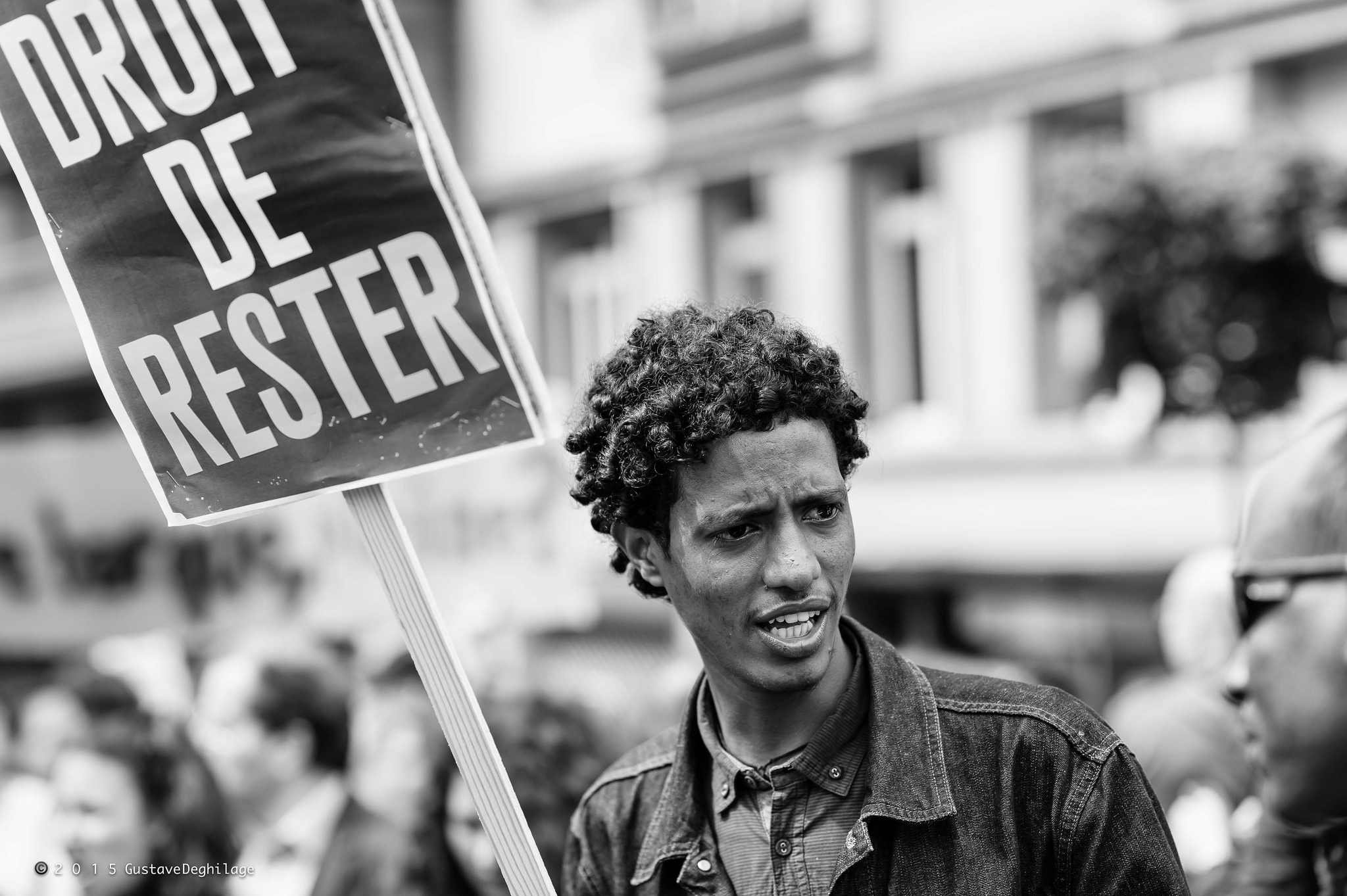Getting to the Root of the Social Disease of White Supremacy
WCIU Journal: Social Justice Topic
June 9, 2020
Summary of a Podcast
Peter McLallen, WCIU’s Interim Vice President for Academic Affairs wrote: One of my favorite podcasts is called On Being. A recent episode is looking at how issues of race and trauma are carried in the body. It struck me as something that may tie with the work of the Roberta Winter Institute. It also made me think about how sin is passed from generation to generation.
Here is a link to the interview with Resmaa Menakem: “Notice the Rage; Notice the Silence”
Therapist and trauma specialist Resmaa Menakem works with the old wisdom of elders and the new science of trauma. He offers an explanation and a way to change ourselves at a cellular level as we confront terrible patterns of racial injustice that have crossed many generations.
Science of Trauma
We have all heard of Post-traumatic stress disorder (PTSD). Ongoing trauma crosses generations through chemical changes in the body caused by the trauma. Angst and anguish become decontextualized—the feelings are there in the nervous system, but the original reason for those feelings is not in the present. For example, the cortizone in a black mother’s body, from the perpetual discomfort of knowing she has a deviant body (from the white norm), is passed on to her unborn child. This teaches the child’s nervous system something.
Trauma, decontextualized in a person, looks like personality.
Trauma, decontextualized in a family, looks like family traits.
Trauma, decontextualized in a people, looks like culture.
So Menakem uses the term, “bodies of culture,” instead of “people of color” and states that the reason he and other “bodies of culture” often feel like they are crazy, or inferior is because they have been affected by the idea that the white body is the supreme standard.
White Body Supremacy
His premise is that there was a certain time when the white body became the supreme standard by which all bodies should be measured. White people will claim to be in favor of “diversity,” but then Menakem asks, “diverse from what?” It’s the white body supremacy from which other bodies diverge.
In tracing the history of white body supremacy, Menakem starts with the trauma that white people have inflicted on each other. For a thousand years in Europe, during the “Dark Ages” and “Middle Ages” of 500 AD – 1500, medieval torture, land theft, enslavement, imperialism, and colonialism were routine. The Tower of London was used for torture. Poor white people were brutalized by rich white people for a thousand years, and then their body fled to this country in the 1600s. They could not come out of that unscathed. They had been traumatized for generations. The 13 colonies were filled with colonized white people. After that level of brutality for all that time, we have the Bacon rebellion—an armed rebellion that took place in 1676–1677 by Virginia settlers, led by Nathaniel Bacon against the rule of Governor William Berkeley. After that you start to see the language of white persons. At that moment, Menakem asserts, the white body became the standard of humanity. Not landowners, not merchants, the white body. Because at that moment the white body had dominion and everything else was a deviant. “After all of that brutality, the white people said, ‘you mean all I’ve gotta do is be white and my babies may not have to go through that? Yeah, I’ll take that.’” A few years later language about white persons shows up in Virginia law. Now poor white people saw their allegiance more with white landowners than with the black slaves they had rebelled with. It was a way of the landowners coopting poor white people into further traumatization.
Today, white culture has created a space of acceptance, understanding. They have symbols, dress, music, story—a culture that is the glue that holds things together. It’s about identity; how you feel inside your body. White bodies are used to feeling comfortable. A story for poor white people is “I’m poor because Mexican immigrants or black people are taking my jobs, and I’m the rightful heir.”
Three Types of Bodies
Seeing how different types of bodies view each other can be a step toward understanding racial tensions.
White Body
The white body sees itself as fragile and vulnerable, and looks to police bodies for protection. It sees black bodies as dangerous and needing to be controlled, yet also as potential sources of service and comfort.
Black Body
The black body sees the white body as privileged, controlling, and dangerous. It is conflicted about the police body which it sees as sometimes a source of protection, sometimes a source of danger, and sometimes both at once.
Police Body
The police body sees black bodies as often dangerous and disruptive as well as super-humanly powerful and impervious to pain.
Healing Racial Trauma
This assessment of how bodies view each other acknowledges the knots we have tied ourselves in literally. Our nervous systems are in knots. The best laws and diversity training have not gotten us anywhere near healing the racial divide in this country. In the 1960s, we changed the laws, but we didn’t change ourselves. We have tried to teach our brains to think better about race, we tried to work on it from policy and politics. But Menakem insists, “While we see violence in the streets of our country, the real battlefield is inside our bodies. If we are to survive as a country, it is inside our bodies where this conflict needs to be resolved. The vital force of white supremacy is in our nervous systems.”
He talks about the vagus nerve that runs from the brain through the face and throat to the abdomen. When stressed, the vagus nerve causes constriction in the throat, in the eyes, in the gut. You can tell when something is wrong when listening to a loved one on a phone by subtle changes in their voice. You can pick up the bracing, the stress.
Bodies of culture (color) that land in this culture have to learn to pick up on these cues. Bodies of culture are uncomfortable every day. They don’t want to offend white bodies because jobs may be at stake, or freedom from incarceration. Young black boys are routinely taught not to run in public, especially not with something in their hands or someone will think you’ve stolen something.
White people have to build a culture and community to be able to acknowledge and change their perception of black bodies. Menakem challenges white bodies: “Your niceness is inadequate to deal with the level of brutality that has occurred. Don’t interpret your niceness as an anti-racist practice. As part of our national and political work, we have to settle in our bodies collectively.”
He offers practices that have the potential to begin change at the neurological level of our bodies. Trauma is in the eternal present. You’re not remembering it; it’s just reliving itself. Many times bodies of culture are waiting for danger. They know intellectually there is no one behind them, but letting the body know it helps. You may notice you have a little bit more room for things to happen that can’t happen when the body and mind aren’t constricted. The practices he advocates enable a person to settle in the real present.
PRACTICE 1:
• Stare straight ahead and notice what you are thinking about
• Look over your left shoulder with neck and hip
• Come back to the center
• Look up, then down
• Look over your right shoulder with neck and hip.
• Come back to the center.
Engaging the vagus nerve in these ways should help you feel more calm and settled.The vagus nerve is about safety. There is a constant need to assess if we are safe. The core of our bodies is always asking if we are safe. If we don’t deal with that, facts will not penetrate.
PRACTICE 2 (especially for black bodies):
When a person of culture goes into a room, even in their own house, pause. Use neck and hips to look around. Given experience of indigenous and black people, there have been real things that have happened to them from behind. Getting whipped, having to run, having to fight; there’s something in the body that gets passed down. And by the time you get it, you just have a notion of it in your nervous system. What the orienting does, it allows you to say I’m not crazy.
By repeating the practices, other things start to become important that you hadn’t noticed before. “Oh I need to read that, I need to pay attention to that, I need to understand that, I need to ask questions about that.” This creates more angst, which forces you to transform. But if you don’t do the work that needs to be done, it makes you more immature.
Being human means we are ever-emerging. We are not machines; we are part of creation. The reason we want to heal the trauma of racialization is that it thwarts the emergence of what is good and human. Menakem advocates intentionally creating cultures that will allow the intrinsic value of people of color to supersede the structural value placed on them by the historic supremacy of white bodies.


